#Chevrolet Camaro STRODE
Text

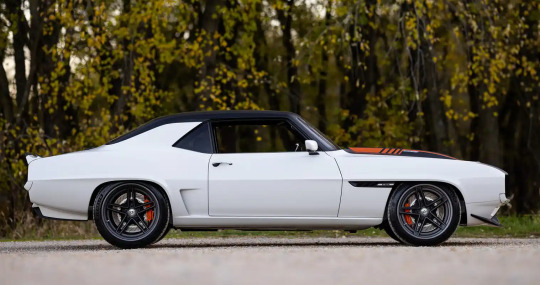
#chevy#chevrolet#camaro#camaro strode#ringbrothers#tuning#american muscle#muscle car#cars#classic#car#fast car#muscle cars#american muscle car
530 notes
·
View notes
Text
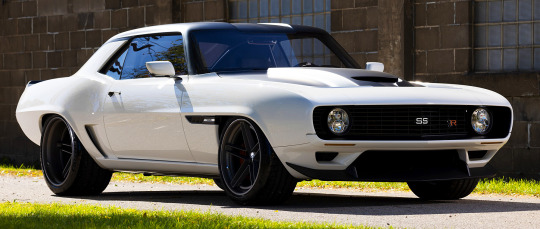


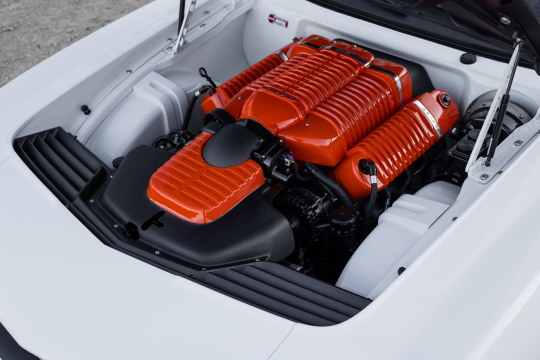


Chevrolet Camaro STRODE, 2022 (1969), by Ringbrothers. Presented at SEMA by the renowned customisers, a restomod first generation Camaro fitted with a Wegner Motorsports LS3 V8 with a Whipple supercharger providing rear wheels with 1,010hp via a Bowler Tremec T-56 Magnum six-speed manual transmission. The bodywork has been reworked in carbon fibre and is 6 inches wider than the original. The project took 6,500 hours to complete
#Cheverolet#Chevrolet Camaro#Chevrolet Camaro STRODE#2022#1969#SEMA#Ringbrothers#restomod#LS3 V8#custom car#modified car#first generation
461 notes
·
View notes
Text
Studio X: The Story of Bill Mitchell’s Secret Styling Studio at General Motors
It was a cold November morning in 1957 when William L. “Bill” Mitchell, heir apparent to General Motors’ industry-dominating design team, strode unexpectedly and atypically alone into the automaker’s basement Research B styling studio. Just back from the Turin, Italy, motor show, Mitchell was thinking how great a second-generation Corvette could look if it borrowed some themes he had seen on the streamlined Italian sports cars at the show.
But Mitchell faced a seemingly impenetrable barrier: On June 6 of that year, the all-powerful Automobile Manufacturers Association (AMA) had forbidden American automakers from participating in any performance or motorsports activities—which included the building, selling, or advertising of performance-oriented products.
This ban was a delayed response to the horrific crash at the 1955 24 Hours of Le Mans, which had killed 77 people and injured as many more. The strong-willed Mitchell—a brilliant designer and racing and performance enthusiast soon to replace the legendary Harley Earl as GM’s styling chief—was told the AMA prohibition meant Chevrolet’s still-struggling Corvette would be removed from the lineup. In response, he reportedly said: “Bullshit! I’m not going to let that happen.”
So he decided to do what most anyone in his position (and possessing huge anti-establishment cojones) would do: set up a clandestine studio hidden from the prying eyes of GM executives, accountants, divisional managers, and anyone else not directly involved—even other designers and studio chiefs.
The result: Some of GM’s greatest cars and concepts—including the spectacular ’59 Stingray Racer, which previewed that next-gen Corvette, hot Monza GT and SS concepts, swoopy Astro I, Astro II, and aircraft-look Astro III idea cars, two Mako Shark concepts, and a Mini-Camaro small-car project—would be created in secret over the next decade.
Check out 11 notable designs from Studio X right here
But those cars were still to come. In 1957, significant world events were afoot. The baby boom was in full swing, the average income was $4,550, the average new house cost $12,220, the average rocket-finned car sold for $2,749, and a gallon of gas was 24 cents. Dick Clark’s American Bandstand teen-dance TV show made its debut, and Elvis’ “Jailhouse Rock” was such a hit that he bought a Memphis mansion and called it Graceland.
With America in confident ascent, Mitchell believed that the racing ban wouldn’t last very long. He wanted a new Corvette design ready. And he needed some trustworthy designers who wouldn’t attract much attention to do it. Knowing that it would take some time to set up and equip the secret studio he had in mind, he decided to kick off this special project in his basement Research B studio, where few if any other designers or executives would notice.
Research B
Research B was leanly staffed, with only three or four young stylists present when Mitchell walked in that chilly morning. Peter Brock (the same person who would years later design Carroll Shelby’s Le Mans–winning Cobra GT) recalled what happened: “He sat down and told us what he wanted to do. And we were looking at each other thinking, ‘Is this for real? He wants to give us the Corvette program?’
“He pulled out a bunch of pictures from Turin and laid them out, and they all had a crisp line around the belt separating upper from lower and aerodynamic shapes over the wheels. And the one that really got to him even though it was two years old by then was the Alfa Romeo Disco Volante. Alfa had done roadster and coupe versions, and Mitchell wanted to do the first Corvette coupe. He said, ‘OK, guys, give me your best. Put it up on the walls. I’ll be back in a few days to check it out.’”
Brock’s theme ultimately won that competition, and with Mitchell stopping by and coaching every few days, his youthful team (also including Gene Garfinkle, Chuck Pohlman, and Norm Neumann, under studio head Bob Veryzer) took it from sketches to a one-fifth-scale model and then to a full-size clay model.
But as the AMA ban lingered, Mitchell decided to evolve that radical concept design into a prototype racer that he would own and campaign himself out of his own pocket, a bold move to test it publicly with no clear connection to Chevrolet or General Motors.
He told the designers to lose the model’s roof and make it a roadster. With designers and modelers working at breakneck speed, the concept was moved, in the dark of night during the 1957 Christmas break, to a secret studio Mitchell had quickly built behind a tool room called the Hammer Room.
“He put in a false wall,” Brock said. “And only he and the guys working there were allowed to go into that secret studio in back. Walking down the hall, looking into the Hammer Room, it looked like a regular tool room.”
The File Room
It was there where this striking model (now designated XP-87) was further developed by ace designer Larry Shinoda and “board man” Tony Lapine into the jaw-dropping 1959 Stingray Racer. And shortly after Mitchell replaced Earl as GM Styling vice president in December 1958, he called staff assistant Ken Pickering into his office and asked him to find a more suitable space to do special projects in ultra secrecy. Pickering walked the entire studio building, but he found no available space. Then, looking at a blueprint, Pickering found a vacant basement room across from the administration building elevator. It had been Earl’s personal file room.
“It was a small room with just one door, but with modifications it could become a working studio,” Pickering said. “[Mitchell] loved the location, as he could have close and direct access from his office—just a short walk to the elevator and down three floors—so he directed me to make it into a studio. We removed walls and replaced them with movable panels, upgraded the lighting, and moved in a modeling platform and other studio equipment, and Mitchell had his secret Studio X.”
A windowless space, it could barely accommodate a small design team and the model they were working on. “By my recollection, the studio was approximately 40 by 15 feet with room for one platform for a car and two drawing tables, a small table for the coffee pot and an even smaller table for the telephone,” said designer Roy Lonberger, who headed Studio X from 1965 to 1968 and years later authored the definitive book, Maestro: Bill Mitchell and the Iconic Cars of GM Styling.
“Adjacent to the platform … was the drafting wall, where the full-size lofting drawing was created and sometimes used to pin sketches,” Lonberger said. “The opposite wall, also a sketch-display wall, consisted of folding doors that had to be opened whenever a model was removed. The ceiling was low, maybe 7 or 8 feet. Nothing glamorous, very claustrophobic, and a rather depressing place to work.”
Mitchell once said that “designing in Studio X is like trying to play trombone in a phone booth,” according to designer Jim Shook, who worked there on an advanced Oldsmobile Toronado concept in the 1960s. Nonetheless, XP-87 was moved into Studio X (again, at night) and finished early in 1959.
Its public debut came April 18, 1959, at a race in Marlboro, Maryland, carrying no badging except “Stingray” in chrome script on its sides. Piloted by Dick Thompson, it went on to win the 1959 and 1960 SCCA class championships. Then Mitchell drove it on the road, and its stunning design soon evolved into the ’63 production Corvette Sting Ray.
Ideas and concepts
Mitchell had several scattered secret studios during that decade, and the records of some were assigned to other programs to hide their costs (and existence) from corporate accountants.
Secret racing cars and some other Mitchell pet projects were designed in the Warehouse Studio (across 12-Mile Road from GM’s Technical Center), in Chevy R&D’s “skunkworks,” and at Jim Hall’s Rattlesnake Raceway in Midland, Texas, so Mitchell could truthfully say that they were not being done at GM Styling.
Studio X churned out performance concepts until 1967. But when Chevrolet/GMC Group chief designer Irv Rybicki was promoted to executive in charge of Styling, he closed Studio X and its satellite studios in an effort to change GM Styling’s focus, “forever ending the Mitchell passion and design essence of Studio X,” Lonberger lamented.
Mitchell reopened Studio X a decade later for one final project, a special one-off car he wanted as his own retirement gift, and he assigned designer Bill Davis to create it.
“It needed to capture his design philosophy of excitement, originality, power, elegance, extreme proportion, flowing lines, shear surfaces, and innovative features,” Lonberger wrote in his book. That challenge was well met by Davis in creating the Pontiac Phantom. Pontiac supported building a running car on ’67 Grand Prix mechanicals but later backed out. Then Howard Kehrl, Mitchell’s GM Technical Staffs boss, killed it. It came close to destruction but received a last-minute reprieve and lives today in the Sloan Museum.
Revival
Intrigued by the lore of Studio X, Ed Welburn—GM’s design vice president from 2003 through his 2016 retirement—established his own secret studio to develop the 2006 Camaro concept car.
Read about 10 landmark cars in Ed Welburn’s life and career — including the 2010 Camaro — right here.
“I don’t know how anyone could work in that small space,” Welburn said of the original Studio X. “I knew there were special projects being done somewhere in the basement, but I never tried to find it. It was always off limits. I didn’t even know where it was when I worked for Mitchell.”
Still, Welburn decided he needed such a place “to do some very private work,” he said.
Other projects done in Welburn’s Studio X included a 2009 Stingray concept car (which later starred in a Transformers movie), some very early C7 Corvette work, and “The Beast,” the latest presidential limousine.
“I used it very much the way Mitchell did,” he said. “No one knew where it was or what we were doing there.”
One day Welburn took his boss, product development vice chairman Bob Lutz, to the modern-day Studio X to see the Camaro concept. “I took him on a very indirect route—downstairs, upstairs, and downstairs again—to keep the location secret,” he said. “When we got close, he saw a photograph on the wall and commented on it. I told the guys to get rid of it because it would tip him off to where we were. But he said there was no way he could find his way back.”
Lutz recalled seeing that secret Camaro and the influence it had on the eventual production model. “Yes, I saw the ‘parallel’ Camaro that ultimately became the concept car,” he said. “The ‘official’ one was not going well … looked like a boxy version of the ’67. The ‘secret’ one became production, adapted from the concept. I knew Ed had a studio which he used for clandestine projects but didn’t worry about it because I knew he’d always bring me into the loop at the right time.”
When Welburn retired, the secret studio was dormant. He said he doesn’t know whether Michael Simcoe, his successor as GM Design vice president, is using such a secret space. So we asked him.
“Yes, secret places still exist here,” Simcoe said. “Vision projects have their own energy and need their own space and time to grow. Some ideas may stay secret while others will have a real impact. After all, it’s Design’s role to push and provide a vision to the company.”
Good to hear. We can’t wait to see whatever wild and wonderful designs emerge.
The post Studio X: The Story of Bill Mitchell’s Secret Styling Studio at General Motors appeared first on Motor Trend.
via RSSMix.com Mix ID 8134279 http://ift.tt/2zAWHoQ
0 notes
Text
Studio X: The Story of Bill Mitchell’s Secret Styling Studio at General Motors
It was a cold November morning in 1957 when William L. “Bill” Mitchell, heir apparent to General Motors’ industry-dominating design team, strode unexpectedly and atypically alone into the automaker’s basement Research B styling studio. Just back from the Turin, Italy, motor show, Mitchell was thinking how great a second-generation Corvette could look if it borrowed some themes he had seen on the streamlined Italian sports cars at the show.
But Mitchell faced a seemingly impenetrable barrier: On June 6 of that year, the all-powerful Automobile Manufacturers Association (AMA) had forbidden American automakers from participating in any performance or motorsports activities—which included the building, selling, or advertising of performance-oriented products.
This ban was a delayed response to the horrific crash at the 1955 24 Hours of Le Mans, which had killed 77 people and injured as many more. The strong-willed Mitchell—a brilliant designer and racing and performance enthusiast soon to replace the legendary Harley Earl as GM’s styling chief—was told the AMA prohibition meant Chevrolet’s still-struggling Corvette would be removed from the lineup. In response, he reportedly said: “Bullshit! I’m not going to let that happen.”
So he decided to do what most anyone in his position (and possessing huge anti-establishment cojones) would do: set up a clandestine studio hidden from the prying eyes of GM executives, accountants, divisional managers, and anyone else not directly involved—even other designers and studio chiefs.
The result: Some of GM’s greatest cars and concepts—including the spectacular ’59 Stingray Racer, which previewed that next-gen Corvette, hot Monza GT and SS concepts, swoopy Astro I, Astro II, and aircraft-look Astro III idea cars, two Mako Shark concepts, and a Mini-Camaro small-car project—would be created in secret over the next decade.
Check out 11 notable designs from Studio X right here
But those cars were still to come. In 1957, significant world events were afoot. The baby boom was in full swing, the average income was $4,550, the average new house cost $12,220, the average rocket-finned car sold for $2,749, and a gallon of gas was 24 cents. Dick Clark’s American Bandstand teen-dance TV show made its debut, and Elvis’ “Jailhouse Rock” was such a hit that he bought a Memphis mansion and called it Graceland.
With America in confident ascent, Mitchell believed that the racing ban wouldn’t last very long. He wanted a new Corvette design ready. And he needed some trustworthy designers who wouldn’t attract much attention to do it. Knowing that it would take some time to set up and equip the secret studio he had in mind, he decided to kick off this special project in his basement Research B studio, where few if any other designers or executives would notice.
Research B
Research B was leanly staffed, with only three or four young stylists present when Mitchell walked in that chilly morning. Peter Brock (the same person who would years later design Carroll Shelby’s Le Mans–winning Cobra GT) recalled what happened: “He sat down and told us what he wanted to do. And we were looking at each other thinking, ‘Is this for real? He wants to give us the Corvette program?’
“He pulled out a bunch of pictures from Turin and laid them out, and they all had a crisp line around the belt separating upper from lower and aerodynamic shapes over the wheels. And the one that really got to him even though it was two years old by then was the Alfa Romeo Disco Volante. Alfa had done roadster and coupe versions, and Mitchell wanted to do the first Corvette coupe. He said, ‘OK, guys, give me your best. Put it up on the walls. I’ll be back in a few days to check it out.’”
Brock’s theme ultimately won that competition, and with Mitchell stopping by and coaching every few days, his youthful team (also including Gene Garfinkle, Chuck Pohlman, and Norm Neumann, under studio head Bob Veryzer) took it from sketches to a one-fifth-scale model and then to a full-size clay model.
But as the AMA ban lingered, Mitchell decided to evolve that radical concept design into a prototype racer that he would own and campaign himself out of his own pocket, a bold move to test it publicly with no clear connection to Chevrolet or General Motors.
He told the designers to lose the model’s roof and make it a roadster. With designers and modelers working at breakneck speed, the concept was moved, in the dark of night during the 1957 Christmas break, to a secret studio Mitchell had quickly built behind a tool room called the Hammer Room.
“He put in a false wall,” Brock said. “And only he and the guys working there were allowed to go into that secret studio in back. Walking down the hall, looking into the Hammer Room, it looked like a regular tool room.”
The File Room
It was there where this striking model (now designated XP-87) was further developed by ace designer Larry Shinoda and “board man” Tony Lapine into the jaw-dropping 1959 Stingray Racer. And shortly after Mitchell replaced Earl as GM Styling vice president in December 1958, he called staff assistant Ken Pickering into his office and asked him to find a more suitable space to do special projects in ultra secrecy. Pickering walked the entire studio building, but he found no available space. Then, looking at a blueprint, Pickering found a vacant basement room across from the administration building elevator. It had been Earl’s personal file room.
“It was a small room with just one door, but with modifications it could become a working studio,” Pickering said. “[Mitchell] loved the location, as he could have close and direct access from his office—just a short walk to the elevator and down three floors—so he directed me to make it into a studio. We removed walls and replaced them with movable panels, upgraded the lighting, and moved in a modeling platform and other studio equipment, and Mitchell had his secret Studio X.”
A windowless space, it could barely accommodate a small design team and the model they were working on. “By my recollection, the studio was approximately 40 by 15 feet with room for one platform for a car and two drawing tables, a small table for the coffee pot and an even smaller table for the telephone,” said designer Roy Lonberger, who headed Studio X from 1965 to 1968 and years later authored the definitive book, Maestro: Bill Mitchell and the Iconic Cars of GM Styling.
“Adjacent to the platform … was the drafting wall, where the full-size lofting drawing was created and sometimes used to pin sketches,” Lonberger said. “The opposite wall, also a sketch-display wall, consisted of folding doors that had to be opened whenever a model was removed. The ceiling was low, maybe 7 or 8 feet. Nothing glamorous, very claustrophobic, and a rather depressing place to work.”
Mitchell once said that “designing in Studio X is like trying to play trombone in a phone booth,” according to designer Jim Shook, who worked there on an advanced Oldsmobile Toronado concept in the 1960s. Nonetheless, XP-87 was moved into Studio X (again, at night) and finished early in 1959.
Its public debut came April 18, 1959, at a race in Marlboro, Maryland, carrying no badging except “Stingray” in chrome script on its sides. Piloted by Dick Thompson, it went on to win the 1959 and 1960 SCCA class championships. Then Mitchell drove it on the road, and its stunning design soon evolved into the ’63 production Corvette Sting Ray.
Ideas and concepts
Mitchell had several scattered secret studios during that decade, and the records of some were assigned to other programs to hide their costs (and existence) from corporate accountants.
Secret racing cars and some other Mitchell pet projects were designed in the Warehouse Studio (across 12-Mile Road from GM’s Technical Center), in Chevy R&D’s “skunkworks,” and at Jim Hall’s Rattlesnake Raceway in Midland, Texas, so Mitchell could truthfully say that they were not being done at GM Styling.
Studio X churned out performance concepts until 1967. But when Chevrolet/GMC Group chief designer Irv Rybicki was promoted to executive in charge of Styling, he closed Studio X and its satellite studios in an effort to change GM Styling’s focus, “forever ending the Mitchell passion and design essence of Studio X,” Lonberger lamented.
Mitchell reopened Studio X a decade later for one final project, a special one-off car he wanted as his own retirement gift, and he assigned designer Bill Davis to create it.
“It needed to capture his design philosophy of excitement, originality, power, elegance, extreme proportion, flowing lines, shear surfaces, and innovative features,” Lonberger wrote in his book. That challenge was well met by Davis in creating the Pontiac Phantom. Pontiac supported building a running car on ’67 Grand Prix mechanicals but later backed out. Then Howard Kehrl, Mitchell’s GM Technical Staffs boss, killed it. It came close to destruction but received a last-minute reprieve and lives today in the Sloan Museum.
Revival
Intrigued by the lore of Studio X, Ed Welburn—GM’s design vice president from 2003 through his 2016 retirement—established his own secret studio to develop the 2006 Camaro concept car.
Read about 10 landmark cars in Ed Welburn’s life and career — including the 2010 Camaro — right here.
“I don’t know how anyone could work in that small space,” Welburn said of the original Studio X. “I knew there were special projects being done somewhere in the basement, but I never tried to find it. It was always off limits. I didn’t even know where it was when I worked for Mitchell.”
Still, Welburn decided he needed such a place “to do some very private work,” he said.
Other projects done in Welburn’s Studio X included a 2009 Stingray concept car (which later starred in a Transformers movie), some very early C7 Corvette work, and “The Beast,” the latest presidential limousine.
“I used it very much the way Mitchell did,” he said. “No one knew where it was or what we were doing there.”
One day Welburn took his boss, product development vice chairman Bob Lutz, to the modern-day Studio X to see the Camaro concept. “I took him on a very indirect route—downstairs, upstairs, and downstairs again—to keep the location secret,” he said. “When we got close, he saw a photograph on the wall and commented on it. I told the guys to get rid of it because it would tip him off to where we were. But he said there was no way he could find his way back.”
Lutz recalled seeing that secret Camaro and the influence it had on the eventual production model. “Yes, I saw the ‘parallel’ Camaro that ultimately became the concept car,” he said. “The ‘official’ one was not going well … looked like a boxy version of the ’67. The ‘secret’ one became production, adapted from the concept. I knew Ed had a studio which he used for clandestine projects but didn’t worry about it because I knew he’d always bring me into the loop at the right time.”
When Welburn retired, the secret studio was dormant. He said he doesn’t know whether Michael Simcoe, his successor as GM Design vice president, is using such a secret space. So we asked him.
“Yes, secret places still exist here,” Simcoe said. “Vision projects have their own energy and need their own space and time to grow. Some ideas may stay secret while others will have a real impact. After all, it’s Design’s role to push and provide a vision to the company.”
Good to hear. We can’t wait to see whatever wild and wonderful designs emerge.
IFTTT
0 notes
Text


#chevy#chevrolet#camaro#camaro strode#ringbrothers#tuning#american muscle#muscle car#cars#classic#car#fast car#muscle cars#american muscle car
343 notes
·
View notes
Text


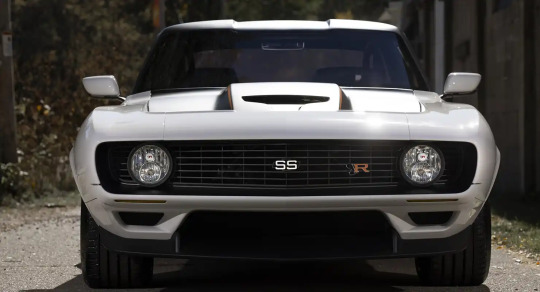
#chevy#chevrolet#camaro#camaro strode#ringbrothers#tuning#american muscle#muscle car#cars#classic#car#fast car#muscle cars#american muscle car
395 notes
·
View notes
Text

205 notes
·
View notes
Text
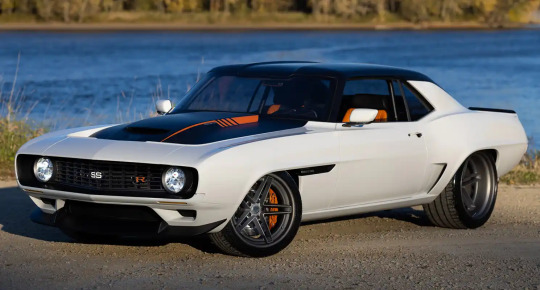
128 notes
·
View notes